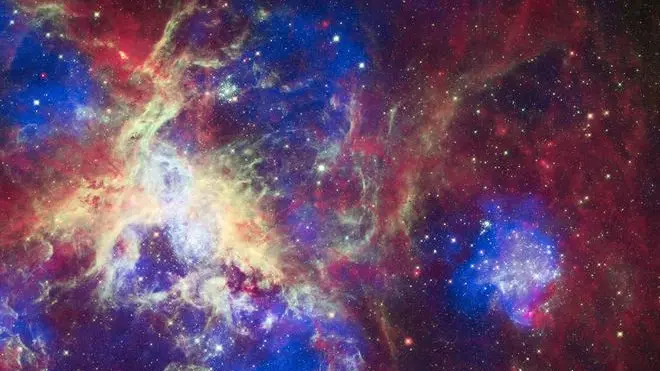Ecco il nostro “infinito” giochiamo con le metafore

III E
MEDIA BIANCHI DI CODROIPO. Questo è il racconto del nostro approccio ad una poesia come “L’infinito” che viene proposta nel nostro libro di antologia (ma anche in altri) come un testo poetico della stessa difficoltà di altri testi e la cui comprensione e il cui significato invece risultavano, per molti di noi, non facili.
Invece di accostarsi alla poesia nel solito modo, in questo caso la professoressa Antonella Soldà, prima di proporre la lettura, la parafrasi e l’analisi del testo poetico, ci ha assegnato il compito di produrre delle metafore sull’infinito, in base alle nostre conoscenze, relativamente al concetto di infinito, apprese nel triennio della scuola media in matematica, in geografia, in religione e storia dell’arte.
Allora ognuno di noi ha elaborato una metafora dell’infinito, mediante il “passaggio” dalla similitudine alla metafora, come nel seguente esempio:
similitudine: Ulisse è astuto come una volpe; metafora: Ulisse è una volpe.
Ed ecco le metafore che sono state da noi “prodotte” e che, secondo noi, potrebbero servire di esempio anche per compagni della nostra età e di altre scuole.
L’infinito è…………………………….
Lorenzo Bierti: “una strada interminabile”; Bigaran Elena Bigaran: “un cerchio attorno cui si gira sempre senza fermarsi”; Francesca Chiarparini Francesca: “il cielo”; Marco Cupin Marco: “lo spazio cosmico”; Nathalia Diplotti Panigutti Nathalia: “l’acqua di un fiume che scorre”; Aurora Felettig Aurora:“una notte stellata; Elisa Martinelli Elisa: “un deserto sterminato”; Deje Mato Deje: “il buio che m’incute terrore”; Lorenza Moretti Lorenza: “il cielo in tempesta perenne”; Miraim Panarello Miriam: “una linea senza inizio e senza fine”; Federico Pandolfo Federico: “un binario ferroviario”; Alessandro Roiatti Alessandro: “un pozzo senza fondo”; Riccardo Salvador Riccardo: “l’universo”; Mattia Schiavone Mattia:“lo spazio con i pianeti”; Antonio Soramel Antonio: “un viale interminabile”; Gabriele Temporin Gabriele: “un buco nero che risucchia pianeti e stelle”; Nicole Tessari Nicole: “una foresta sconfinata”; Nicholas Tiussi Nicholas: “un deserto sconfinato”; Alessandra Tonizzo Alessandra: “un uccello che vola nel cielo senza meta”; Veronica Toppano Veronica: “il mare sterminato”; Turchet Stefano: “lo spazio con i pianeti e le stelle”; Marta Valoppi Marta: “il mare con una barca sperduta”; Christian Valoppi Christian: “un tunnel senza uscita”; Martina Zanon Martina: “una linea retta”.
In questo modo è stato possibile comprendere meglio il significato della poesia e nello stesso tempo ci siamo resi conto che Giacomo Leopardi, utilizzando le metafore: infinito/spazio, infinito/tempo e collegandole attraverso la metafora voce/vento, ha realizzato una strategia metaforica.
Riproduzione riservata © Messaggero Veneto








